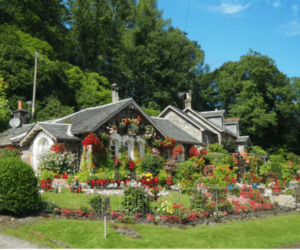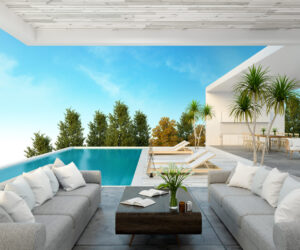Being more eco-friendly is something we should all try to do, and when it comes to our homes, this is an excellent place to start. Even the smallest of changes can make a significant, positive difference, and if we all do it, that difference will be even greater.
It can be hard to determine exactly how to get started when it comes to being more environmentally friendly. Read on for some excellent eco-friendly home improvement trends that will help your home become greener and keep it current.

Solar Energy
One of the biggest drains on the environment is the world’s energy usage, so if you can switch your current energy to something more sustainable, that will help a great deal. One option – perhaps the easiest when it comes to your home – is to install solar panels. When you do this, you can improve your home’s energy efficiency and potentially save money on your energy bills at the same time. It’s no wonder that this is one of the top eco-friendly home improvement trends.
The only issue with this idea is that it can be fairly costly to begin with. Of course, the idea is that over time the solar panels will pay for themselves thanks to the savings they’ll bring, but at the outset you still need to have the money to pay for them.
Energy Efficient Lighting
Another issue with many homes is the lighting that’s used within them. It can be costly, especially when lights are left on a lot of the time (it’s so easy to forget to turn them off), and if you’re using a lot of energy, this is bad for the environment.
If you switch to more energy-efficient bulbs, such as LED bulbs, you can use up to ninety percent less energy than with standard bulbs. This is fantastic; you’re helping the environment, and your household costs will go down at the same time. Plus, when it comes to quick and easy fixes, changing your light bulbs is one of the top eco-friendly home improvements trends you can follow.
Use Recycled Items
When you are looking at buying new furniture or any kind of home décor, it’s likely you’ll think about buying brand new items. However, one of the top eco-friendly home improvement trends is actually to use recycled items instead.
This could mean picking wallpaper made of recycled materials or carpet in the same vein, for example. Perhaps you could opt for reclaimed kitchen surfaces or scaffold boards. Maybe the furniture you use is old but has been upcycled (or perhaps you would like to do the upcycling yourself). There are many options and many advantages to doing this. Firstly, you’ll prevent items from being taken to landfills. Secondly, your home will look great thanks to all the unique things inside it. So the next time you need to update your home or buy a new piece of furniture, think second-hand before new, and you can be much more eco-friendly.
Biophilic Design
Nature can be beneficial to us in both physical and mental ways. Unfortunately, for several centuries, buildings have been constructed to divide us from nature, but that has changed dramatically with today’s developments. The major goal of biophilic design is to reintroduce nature and its aspects into homes and buildings.
Professionals believe that altering the patterns of shadows and sources of light in buildings throughout the day might favorably impact our inner biorhythms. This is simply accomplished by having structures follow and catch the movement of the sun via the use of windows, patterns, and other architectural elements.
Passive Building Design
The inside atmosphere of a passive house is powered by exterior factors given by Mother Nature, reducing energy usage. Instead of a design that relies on technology such as boilers, air conditioning, and electric lighting, it incorporates solar radiation, air pressure changes, outside temperatures, and wind that flows through nature as an effective form of ventilation with little or no reliance on contemporary machinery.
Passive houses use architectural characteristics such as sun shading devices and wing walls to assist in limiting heat loss in the winter and minimize heat gain in the summer. Passive design may offer up new avenues for low-cost building.
Vernacular Architecture
Beyond preserving the cultural component of an area, designing a structure using indigenous construction principles is helpful. Vernacular design places a premium on employing materials that are readily available on-site, which minimizes transportation expenses and eliminates the possibility of material scarcity. This idea also means that your home will always look as though it’s meant to be there and will blend in with its surroundings, helping you to enjoy it more.



